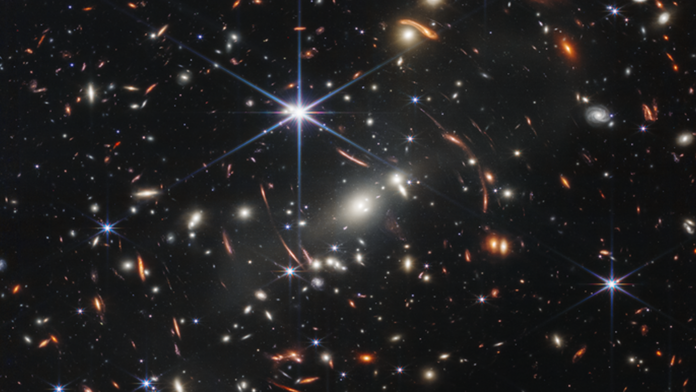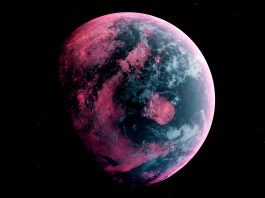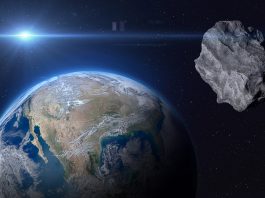Images obtained by the James Webb Space Telescope (JWST) have unearthed the oldest globular clusters in the Universe.
Expert researchers from the CAnadian NIRISS Unbiased Cluster Survey (CANUCS) have analysed the first deep field image from JWST, revealing the Universe’s oldest globular clusters – a dense group of millions of stars that may contain the first stars in existence.
Lamiya Mowla, the co-lead author of the study from the Dunlap Institute for Astronomy & Astrophysics at the University of Toronto, commented: “JWST was built to find the first stars and the first galaxies and to help us understand the origins of complexity in the Universe, such as the chemical elements and the building blocks of life. This discovery in Webb’s first deep field is already providing a detailed look at the earliest phase of star formation, confirming the incredible power of JWST.”
Analysing JWST’s deep field image
While examining the first deep field image, the researchers zeroed in on the ‘Sparkler Galaxy,’ located around nine billion light-years from Earth, which got its name due to the compact objects surrounding it that appear as yellow dots the researchers refer to as sparkles.
The team theorised that these sparkles might be young clusters actively forming stars that were created three billion years following the big bang – or old globular clusters. Globular clusters are ancient groups of stars from the early stages of galaxies, containing information about their evolution. The team analysed 12 of these compact objects, discovering that five were among the oldest globular clusters ever encountered.
Kartheik G Iyer, also a co-lead author of the study from the Dunlap Institute for Astronomy & Astrophysics at the University of Toronto, explained: “Looking at the first images from JWST and discovering old globular clusters around distant galaxies was an incredible moment, one that wasn’t possible with previous Hubble Space Telescope imaging.
“Since we could observe the sparkles across a range of wavelengths, we could model them and better understand their physical properties, like how old they are and how many stars they contain. We hope the knowledge that globular clusters can be observed from such great distances with JWST will spur further science and searches for similar objects.”
Understanding globular clusters
The Milky Way is home to around 150 globular clusters; however, how these dense groups of stars formed is still ambiguous. We know that globular clusters can be extremely old, but quantifying their age is challenging. For the first time, JWST has enabled researchers to use distant globular clusters to age-date the first stars in distant galaxies.
Mowla said: “These newly identified clusters were formed close to the first time it was even possible to form stars. Because the Sparkler galaxy is much farther away than our own Milky Way, it is easier to determine the ages of its globular clusters. We are observing the Sparkler as it was nine billion years ago, when the Universe was only four-and-a-half billion years old, looking at something that happened a long time ago. Think of it as guessing a person’s age based on their appearance — it’s easy to tell the difference between a five- and ten-year-old, but hard to tell the difference between a 50- and 55-year-old.”
The increased resolution and sensitivity of JWST allowed the team to observe the tiny dots surrounding the galaxy for the first time. The Sparkler Galaxy is unique because it is magnified by a factor of 100 due to gravitational lensing – an effect where the SMACS 0723 galaxy cluster in the foreground distorts what is behind it – acting like a giant magnifying glass. Furthermore, gravitational lensing creates three separate images of the Sparkler Galaxy, enabling the researchers to study it in more detail.
Chris Willott, CANUCS team lead, commented: “Our study of the Sparkler highlights the tremendous power in combining the unique capabilities of JWST with the natural magnification afforded by gravitational lensing. The team is excited about more discoveries to come when JWST turns its eye on the CANUCS galaxy clusters next month.”
JWST’s Near-Infrared Imager and Slitless Spectrograph (NIRISS) instrument provided independent confirmation that the objects are old globular clusters because the team did not observe oxygen emission lines that are measurable spectra from young clusters that are actively forming stars. The instrument also helped to understand the geometry of the triply Sparkler images.
Marcin Sawicki, professor at Saint Mary’s University and study co-author, said: “JWST’s made-in-Canada NIRISS instrument was vital in helping us understand how the three images of the Sparkler and its globular clusters are connected. Seeing several of the Sparkler’s globular clusters imaged three times made it clear that they are orbiting around the Sparkler galaxy rather than being simply in front of it by chance.”
In October, JWST will examine the CANUCS fields, utilising its existing data to analyse five massive clusters of galaxies, in which the team expect to find more similar systems.









